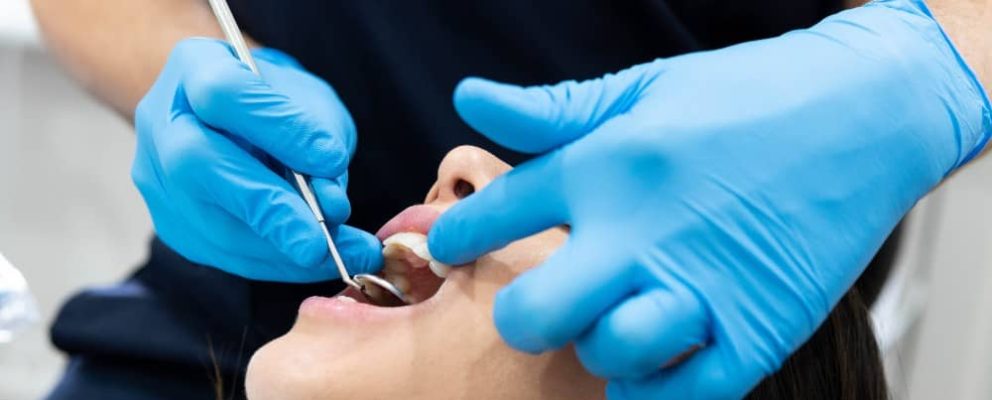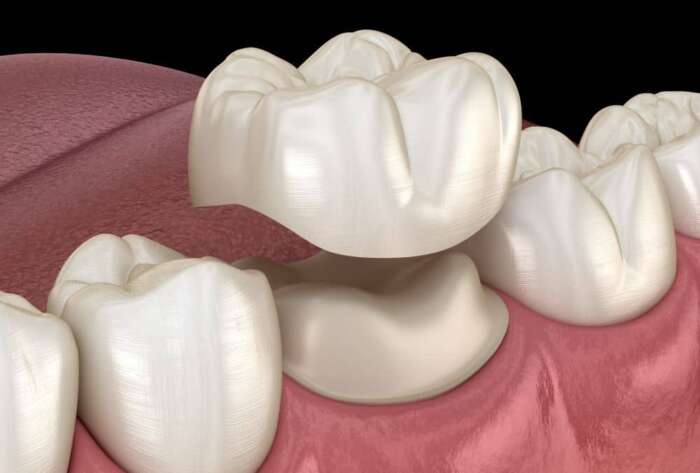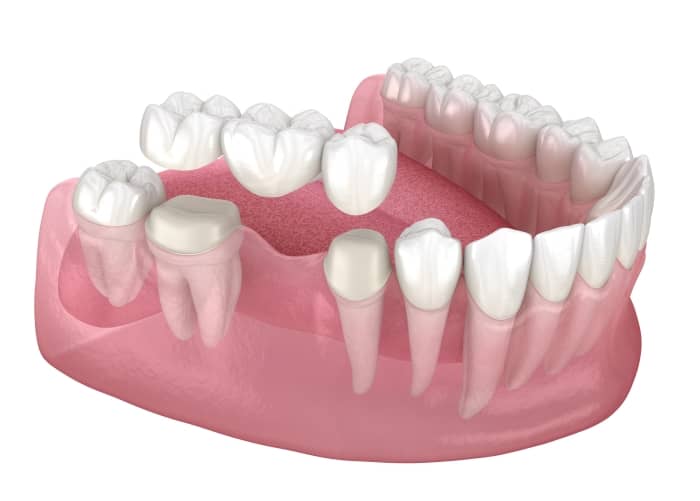Are you worried about missing, decayed, discoloured, or cracked teeth?
There is a range of effective tooth restoration options that can improve the function and appearance of your smile.
In this article, we’ll explain the five most common types of tooth restorations so you can learn more about your options for achieving a healthy smile.
5 Most Common Types of Tooth Restorations
We often perform teeth restorations to restore the appearance and function of teeth after damage due to decay or injury.
Here are the 5 most common types of tooth restorations.
1. Fillings
Fillings are the most common type of tooth restoration. According to a report by the
Australian Dental Journal, over three-quarters of Australians have at least one filling.
We use fillings to restore areas that have been damaged by decay. First, the area is cleaned out and then the cavity is filled with a material to restore the tooth. This simple procedure can restore the area and prevent bacteria from entering the tooth leading to further decay or infection.
Fillings can also be used to repair teeth that have been cracked or broken from tooth grinding. Thanks to advances in anesthetics, many patients tell us that getting a filling is practically painless.
There are numerous types of fillings, including:
- Composite fillings – Composite fillings are a popular, durable option that is tooth-coloured to provide a natural appearance.
- Amalgam fillings – Amalgam fillings are made from a mix of metal alloys that harden once placed. They are often a silver colour that is very obvious compared to surrounding teeth.
- Porcelain and ceramics – Porcelain material is often used when a large area needs to be restored.
Learn More: How to Prepare for a Filling
2. Dental Crowns
Dental crowns consist of a manufactured cap that fits over an existing tooth. Dental crowns act as a shield for a tooth, protecting it against damage and improving its appearance.
Dental crowns are used to:
- Protect cracked or weakened teeth against breakage
- Fix teeth that have too much decay to be restored by a dental filling
- Restore teeth that are worn down
- Protect teeth after a root canal procedure
- Conceal a severely discoloured tooth
- Conceal a misshapen tooth
- Anchor a dental bridge in place
The dental crown procedure is relatively straightforward and extremely effective. First, we remove any decay and repair any breaks or fractures with filling materials. This creates the foundation for the crown.
We then evenly file down the tooth a very slight amount to make space for the crown to fit onto the tooth. Using a 3D digital scan, we create a personalised crown that fits securely and perfectly over the tooth.
After the placement of a temporary crown for around 7 to 10 days, we cement the permanent crown into place.
3. Dental Implants
If you have one or more missing teeth, you may be a good candidate for a dental implant.
A dental implant is a tiny titanium post or screw that gets surgically implanted into the jawbone where a tooth is missing. After the implantation, we wait as the implant becomes integrated with the surrounding bone, a process known as osseointegration.
The implant then serves as a secure, artificial root that can hold a dental bridge or crown in place.
Dental implants require multiple procedures and can take several months to complete. Although they are one of the more involved dental restoration options, dental implants offer excellent durability and a long lifespan. Good candidates for dental implants have adequate bone support and healthy gums.
Dental implants offer several advantages, including:
- Look, feel, and function like natural teeth
- Eliminate the bone loss that results from missing teeth
- Prevents teeth from shifting due to a missing tooth
- Can securely hold a dental bridge or dentures in place
- Provides the strength needed to confidently enjoy foods
- Prevents the decay and gum disease that often accompany a missing tooth
- Can last for decades when properly cared for
Learn More: Types and Benefits of Missing Teeth Options
4. Dental Bridges
Missing teeth affect more than just the appearance of your mouth. If you are missing one or more teeth, the open space can allow for shifting, speech issues, jaw bone loss, and the build-up of food debris that can lead to decay.
A dental bridge is a fixed prosthetic device used to replace missing teeth. Bridges are usually made of ceramic or porcelain and are attached to surrounding teeth.
To support and secure a bridge, the healthy teeth on either side of the gap may be fitted with crowns. The dental bridge is then attached to the surrounding teeth by crowns. Some instances require dental implants to provide additional support.
We determine the appropriate type of dental bridge based on the condition of surrounding teeth (also known as abutment teeth), how many teeth are missing, and other factors. Dental bridges often take several appointments to complete.
Learn More: Understanding Dental Bridges and How They Work
5. Veneers
Veneers are tooth-coloured shells that are placed over the front surface of one or more teeth. This cosmetic procedure can restore the look of your smile and conceal chipped, cracked, discoloured, or damaged teeth.
Veneers can be made from composite resin or porcelain. This is a more intensive cosmetic dentistry procedure that typically involves grinding down natural tooth enamel as part of the preparation process.
Find Out If You Are a Good Candidate for Tooth Restoration
Tooth restoration can protect your tooth, restore function, and improve the appearance of your smile.
If you want to restore the look and function of your smile, we would be happy to discuss the tooth restoration options that will work best for you.
Contact us with questions or to book an appointment to determine if you are a good candidate for tooth restoration.







